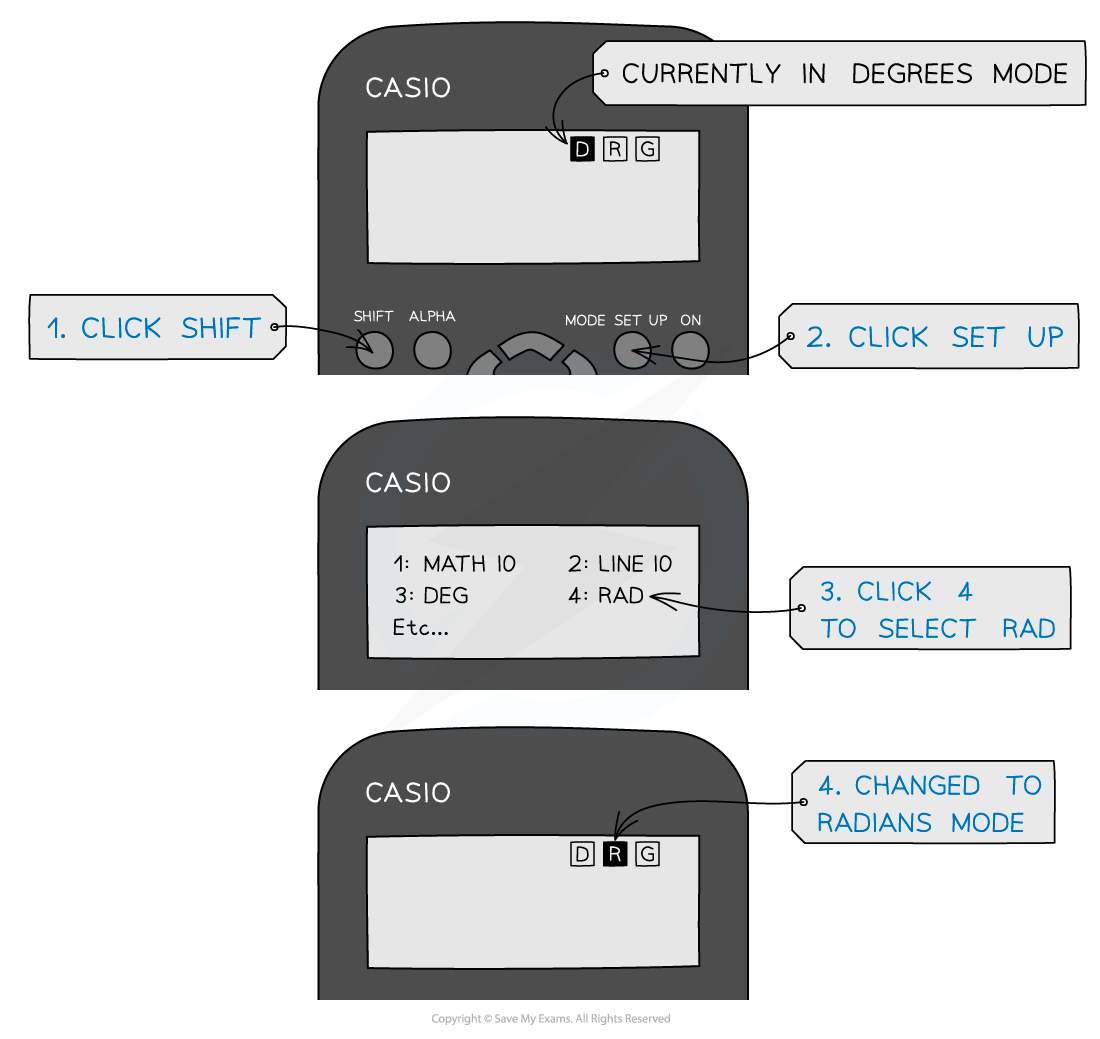Radians & Angular Displacement (Cambridge (CIE) A Level Physics): Revision Note
Exam code: 9702
Radians & angular displacement
Angles in radians
A radian (rad) is defined as:
The angle subtended at the centre of a circle by an arc equal in length to the radius of the circle
Visual definition of radian

When the angle is equal to one radian, the length of the arc (S) is equal to the radius (r) of the circle
Radians are commonly written in terms of π
The angle in radians for a complete circle (360°) is equal to:
Use the following equation to convert from degrees to radians:
Table of common degrees to radians conversions
Degrees (°) | Radians (rads) |
|---|---|
360 | |
270 | |
180 | |
90 |
Angular displacement
In circular motion, it is more convenient to measure angular displacement in units of radians rather than units of degrees
Angular displacement is defined as:
The change in angle, in radians, of a body as it rotates around a circle
This can be summarised in equation form:
Where:
Δθ = angular displacement, or angle of rotation (radians)
S = length of the arc, or the distance travelled around the circle (m)
r = radius of the circle (m)
Note: both distances must be measured in the same units, e.g. metres
Visual representation of angular displacement equation

An angle in radians, subtended at the centre of a circle, is the arc length divided by the radius of the circle
Worked Example
Convert the following angular displacement into degrees:

Answer:
Step 1: Rearrange the degrees to radians conversion equation
Step 2: Substitute the values to calculate
Examiner Tips and Tricks
You will notice your calculator has a degree (Deg) and radians (Rad) mode
This is shown by the “D” or “R” highlighted at the top of the screen
Remember to make sure it’s in the right mode when using trigonometric functions (sin, cos, tan) depending on whether the answer is required in degrees or radians
It is extremely common for students to get the wrong answer (and lose marks) because their calculator is in the wrong mode - make sure this doesn’t happen to you!


Unlock more, it's free!
Did this page help you?